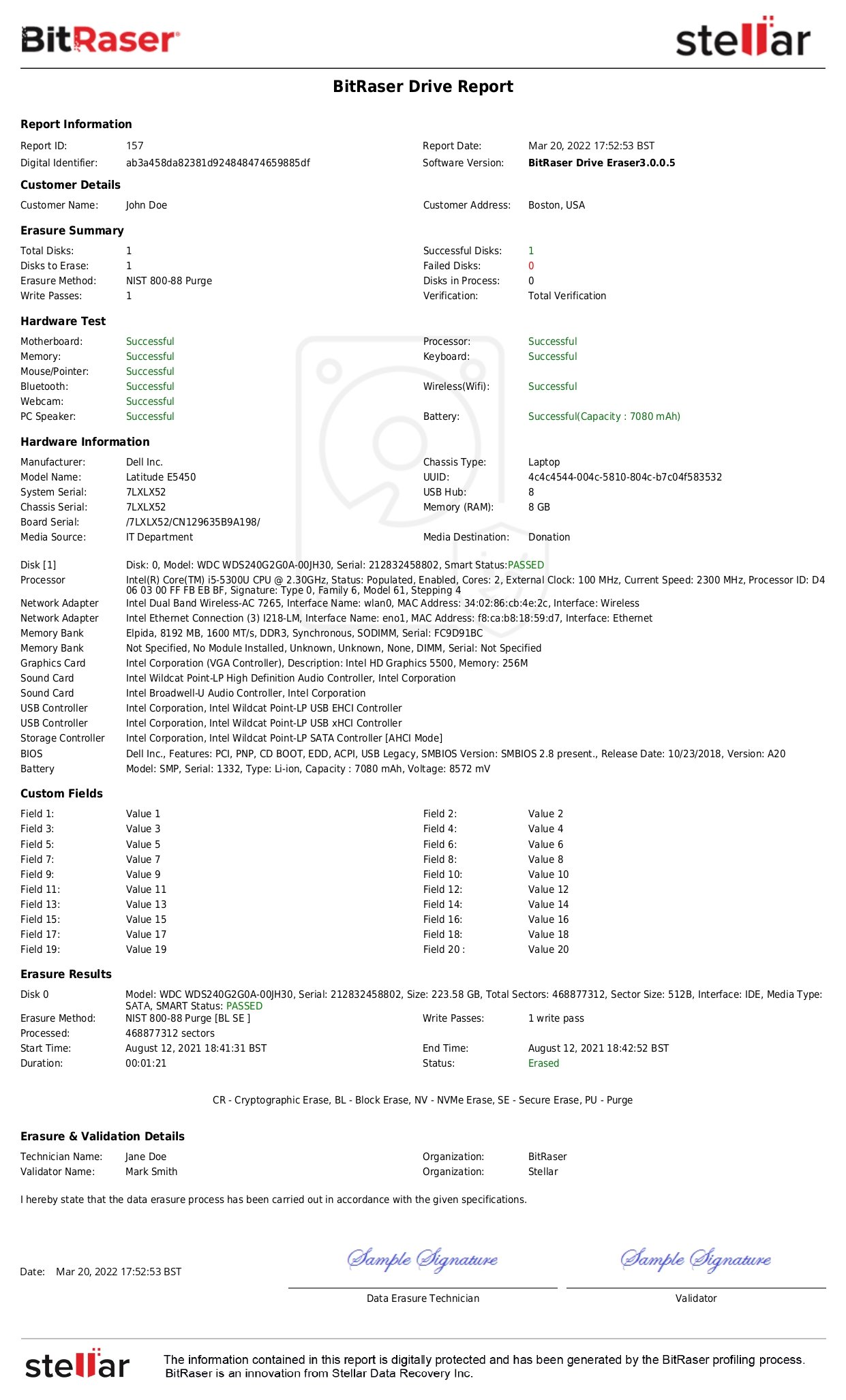An Application Programming Interface (API) is a communication channel that allows applications to communicate. The process of connecting different applications using APIs is called API integration. The BitRaser API is vital for organizations to facilitate smooth data transfer of essential information during data erasure related to devices erased, erasure reports, users, and more. It enables seamless integration between the BitRaser Cloud account and the IT Asset Management tool (of the customer), allowing them to store the transferred data efficiently. This integration empowers organizations to enhance their operational efficiency significantly.
For example, An ITAD (IT Asset Disposition) company might use various applications to manage its IT assets inventory and data disposal process. Integrating their IT Asset management software with BitRaser API will allow them to automate data transfer post-data erasure to improve accuracy, reduce human errors, and save time.
Need for API Integration with Asset Management Tools:
API Integration with Asset Management tools has become increasingly important due to various reasons, a few have been discussed below:
- Streamlining Operations: Seamless flow of information between BitRaser data erasure software and IT asset management tools like Manage Engine, Solar winds, Customized applications, etc. reduces manual data entry of information and prevents errors. This helps organizations streamline their operations and improves the overall accuracy and efficiency of asset management.
- Enabling Automation: BitRaser API Integration enables organizations to automate data erasure workflows, thereby reducing the need for human intervention, allowing faster response time, and improving productivity.
- Improved Operational Efficiency: The integration allows real-time updates and synchronization between BitRaser Cloud and IT Asset Management tools, helping achieve consistent and up-to-date information across platforms and ensuring data accuracy.
- Improved Compliance: API Integration provides real-time wiping information, helping IT Managers stay updated with the data wiping status of their inventory. It helps them maintain compliance with standards and regulations like CCPA, GDPR, and ISO 27001.
API Integration has become a critical necessity for businesses because of its multiple benefits for IT asset management. BitRaser API is highly secure, easy to integrate, and offers data value extraction from erasure reports and certificates for drive, mobile, and drive over the network. Let us see how BitRaser API works. (See Image 1)
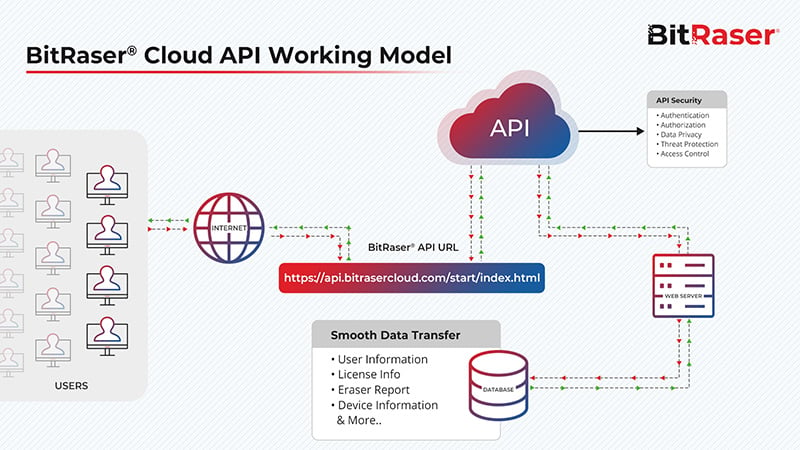
Image 1: BitRaser Cloud API Working Model
How Does BitRaser Cloud API Work?
BitRaser Cloud API is hosted on the BitRaser Secure Server. Post-authorization, you can seamlessly extract data from your cloud console into any asset management tool to record erasure reports and information.
Steps to be followed:
Step 1: Go to the URL: https://api.bitrasercloud.com/start/index.html. (See Image 2)
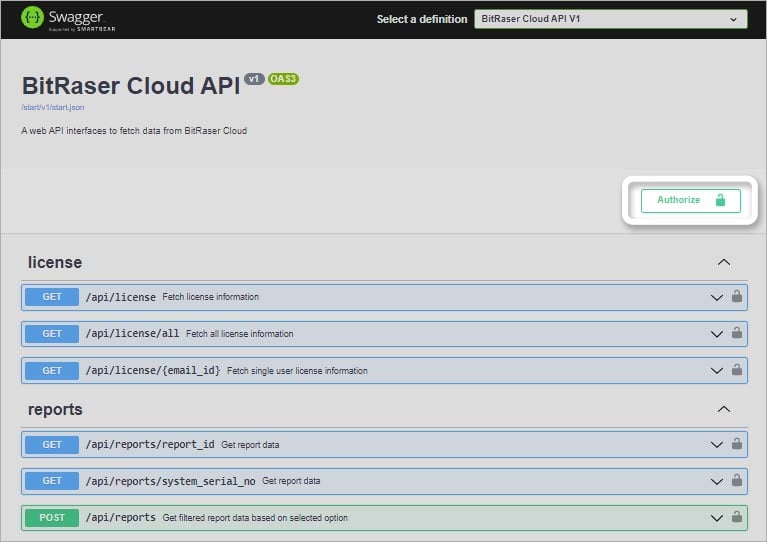
Image 2: BitRaser Cloud API Main Screen
Step 2: Now, you need to click on the 'Authorize' button to give access to your cloud console. (See Image 3)
You need to use the 'username' and 'password' of the BitRaser cloud console. Once authorized, the user can raise a request to fetch data from BitRaser Cloud. During the request and response stages, API provides security to ensure that the data at rest and in transit is always protected. These security services of API include:
- Authentication: It helps recognize the user or application's identity by authenticating the login credentials used to log in to the API.
- Authorization: It is the process of allowing or denying API access to a user based on the level of access as defined by the authorization mechanism.
- Data Privacy: Safeguarding business confidential data from any unauthorized access, usage, or processing is achieved through data encryption.
- Threat Protection: It refers to the security provided by API to protect against various types of attacks, such as DDoS (Distributed Denial-of-Service) and injection attacks.
- Access Control: It refers to the mechanisms for granting or denying access and the actions that a user or application may perform. API gateways are commonly used as a single-entry point in access control.
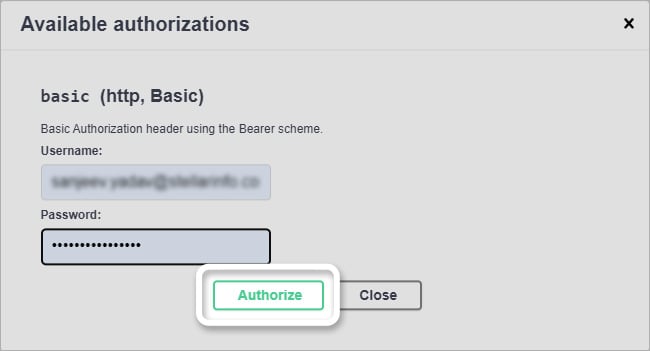
Image 3: BitRaser API Authorization Screen
Step 3: Get Data Values as per the defined parameters.
Post Authorization, various parameters can be fetched into the asset management tool. Let's discuss each one in detail:
-
License:
The first option is 'License' (See Image 4); it contains three options viz. license, license/all, and license/ {email_id}.

Image 4: BitRaser API License
- License: The option is used to fetch license information for a single user. Click on 'Try it out', and choose the query from the License hub.
For example, if you wish to pull data of drives wiped into the asset management tool then select the value 'Drive Eraser' from available options and then click 'Execute'. (See Image 5)
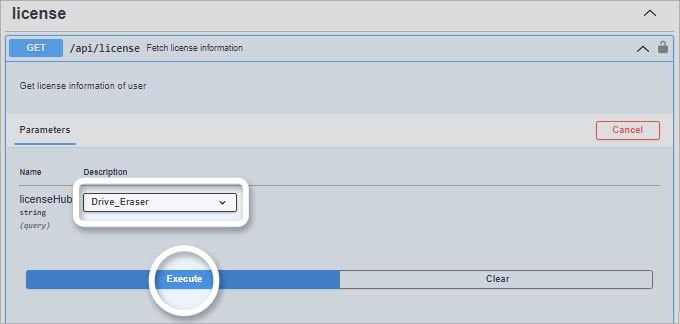
Image 5: BitRaser API License Click Try, then Select Value
Once executed, you will see the number of licenses available for the selected value (In this case, BitRaser Drive Eraser). The result will display the product name, email ID with which the account is linked, number of licenses available, and number of licenses consumed. (See Image 6)
These results can also be downloaded in JSON format. Similarly, the same can be done for the other products as well.
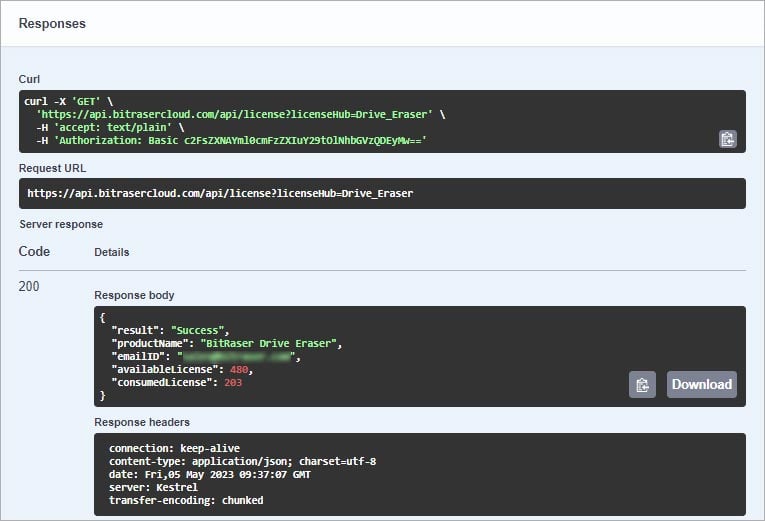
Image 6: BitRaser API License Response
- License All: It is used to fetch license information about all users. This feature works with the BitRaser Cloud Admin & Manager Account (The account that allows license distribution and User creation Control).
You can learn more about creating and managing users, as well as their roles in our KB on BitRaser Cloud Console.
The process for fetching information is similar to that mentioned above; once you click 'Execute' you will be able to see all users and the number of available and consumed licenses for each user. (See Image 7)
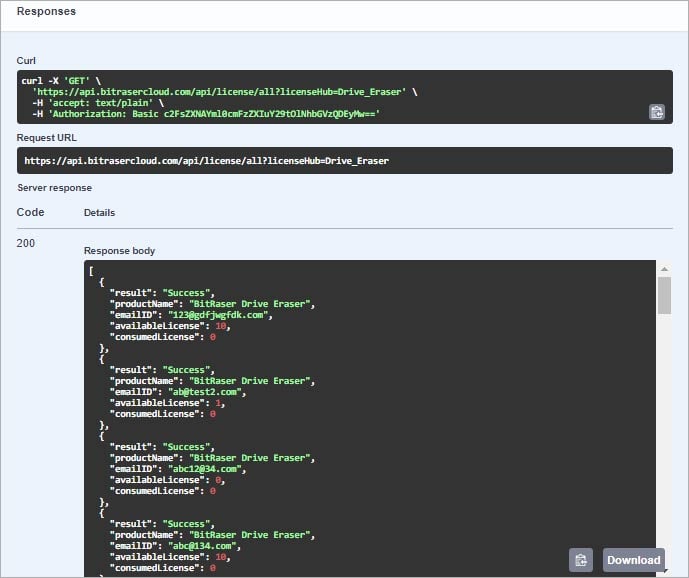
Image 7: BitRaser API License All Response
-
License Email ID: Used to fetch the license details of a single user by entering their registered email ID. Entering the Email ID and pressing 'Execute' will reveal the number of licenses (Drive Eraser, Mobile Eraser & Mobile Diagnostics) assigned to that email. (See Image 8)
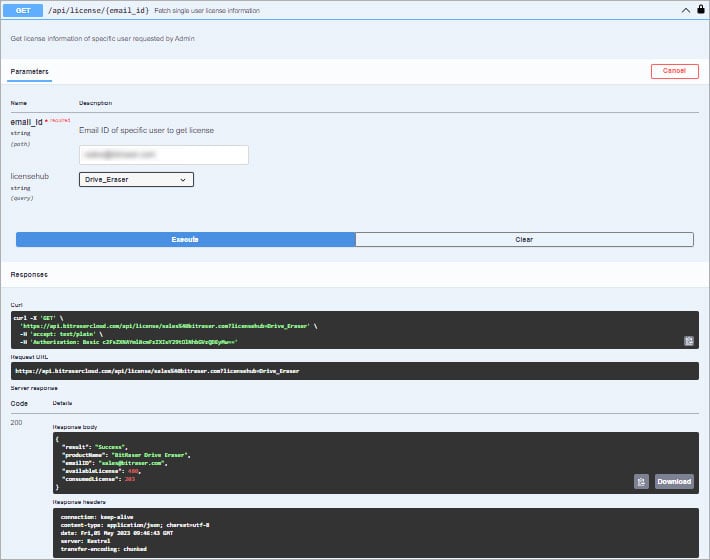
Image 8: BitRaser API License Email Response
-
Reports:
The second parameter is 'Reports' (See Image 9). It is used to fetch the report data as per the report ID and system serial number. It also allows fetching reports according to pre-defined report parameters.
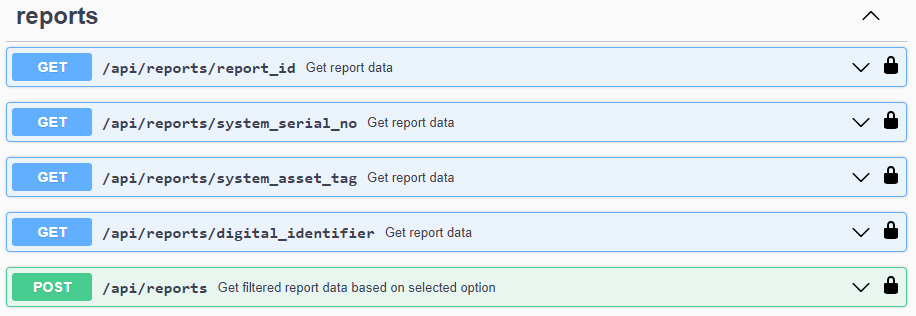
Image 9: BitRaser API Reports
-
Report ID: Fetch reports by entering the report ID; it will display all the details related to that report. (See Image 10)
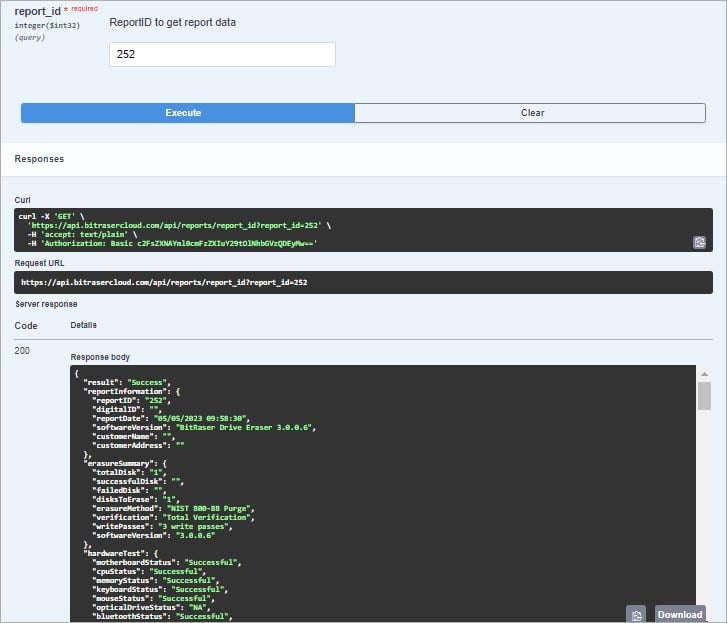
Image 10: BitRaser API Report ID Response
-
Report System Serial Number: It fetches report data using the system serial number. Once you enter the system serial number and press execute, it will fetch the report related to that system. (See Image 11)
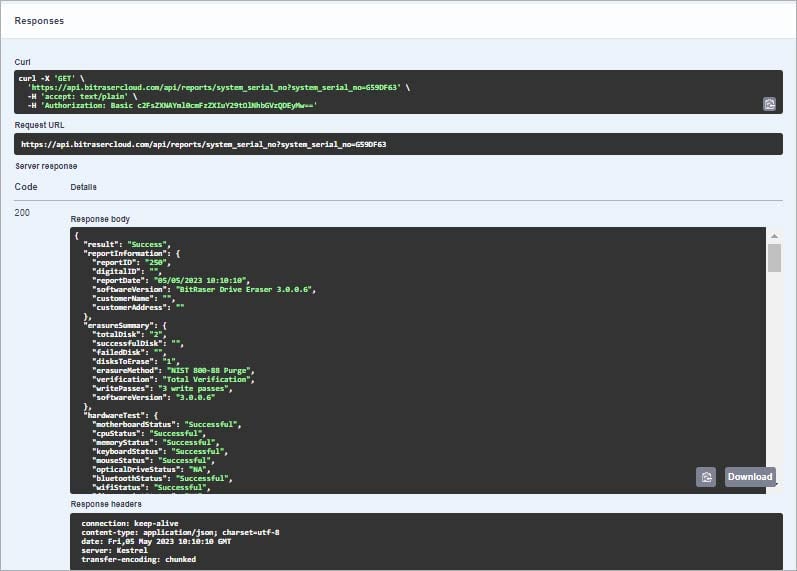
Image 11: BitRaser API Report System Serial Number Response
- Reports System Asset Tag: It fetches the report data based on the system asset tag. Enter the system asset tag and then press execute; it will fetch the report related to that asset tag. (See Image 12)
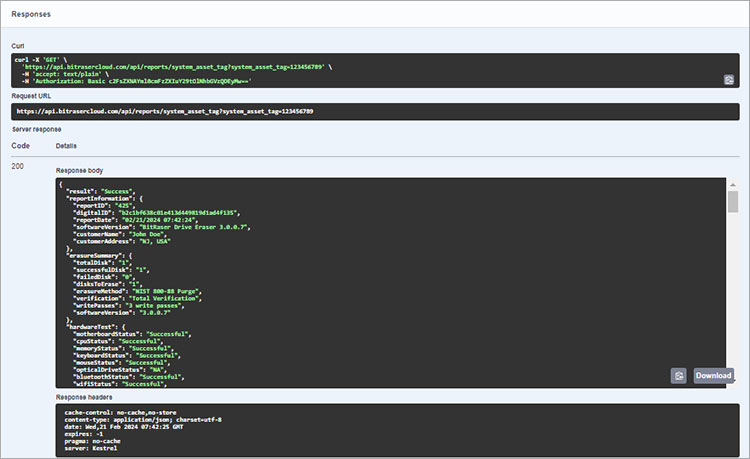
Image 12: BitRaser API Report System Asset Tag Response
- Reports Digital Identifier: Use this option to fetch erasure reports based on the digital identifier associated with that report. Enter the digital identifier and click on execute to fetch the report associated with that digital identifier. (See Image 13)
Image 13: BitRaser API Report Digital Identifier Response
-
POST Reports: It allows fetching reports based on selected criteria (See Image 14).
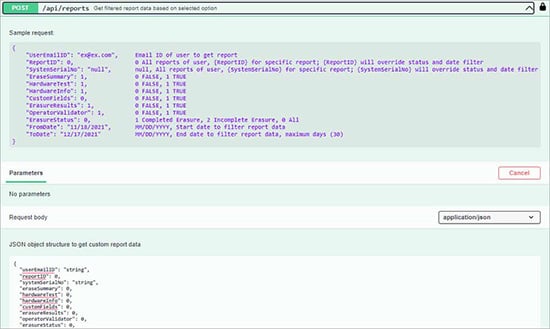
Image 14: BitRaser API Post Reports Structure
After each report segment, the user can customize data fetching according to the responses (Either 0 or 1)
The next three sections are as follows:
- Reports Drive Network: Same functionality as Reports, but only for 'BitRaser Drive Network'.
- Reports Mobile Diagnostics: Same functionality as Reports, but only for 'BitRaser Mobile Diagnostics'.
- Reports Mobile Eraser: Same functionality as Reports, but only for 'BitRaser Mobile Eraser'.
-
User:
This is the last section in BitRaser API, it is used for fetching User information. (See Image 15)
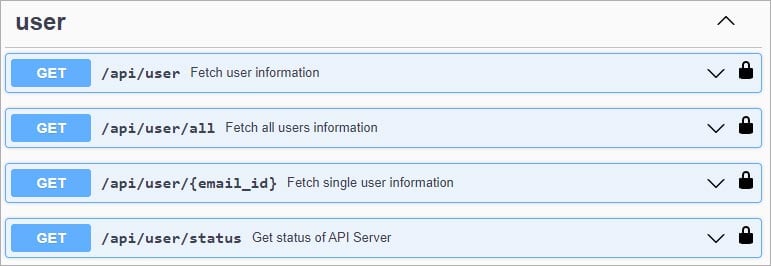
Image 15: BitRaser API User Main Screen
This section has the following options:
-
User: Used to fetch the user details. It will fetch only the details of the users whose email credentials were used to log in to BitRaser Cloud API. (See Image 16) The details include the Role (Admin, Manager, Standard User, and Pool User), group (The user group as set on BitRaser Cloud), time zone, last login time and date, etc.
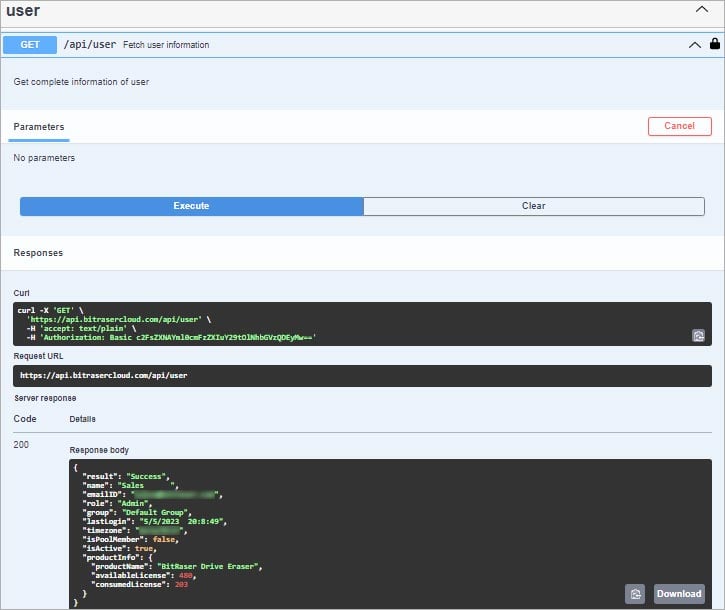
Image 16: BitRaser API User
-
User All: This option fetches data for all the users. It includes any user the Admin or Manager (BitRaser Cloud Account) creates. All the details mentioned in the User option can be fetched, like role, group, time zone, last login time and date, etc. (See Image 17)
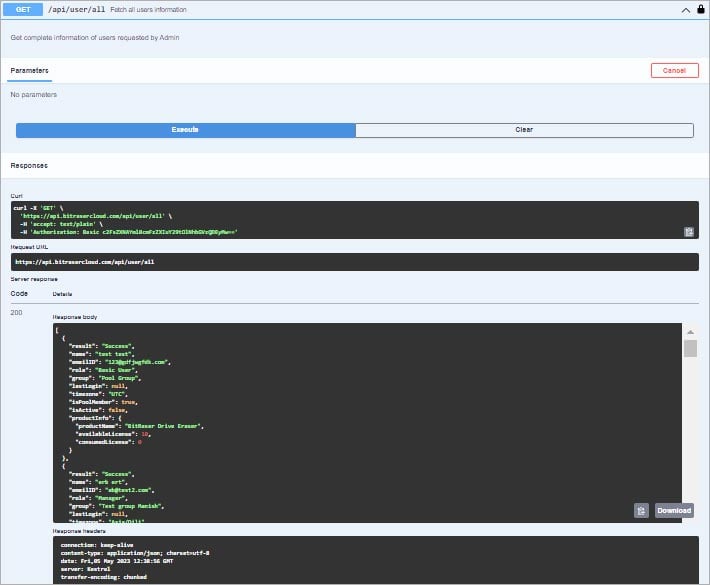
Image 17: BitRaser API User All
-
User Email ID: The option is used to retrieve data for users based on their email addresses. (See Image 18)
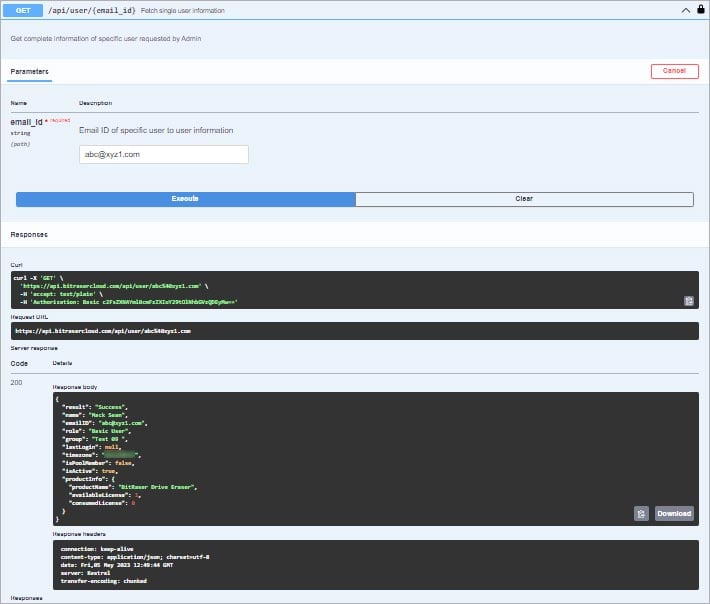
Image 18: BitRaser API User Email ID
- User Status: It is used to check the status of the API server. (See Image 19)
If the server is functioning properly, the 'Response' will state, 'API Server is Running'.
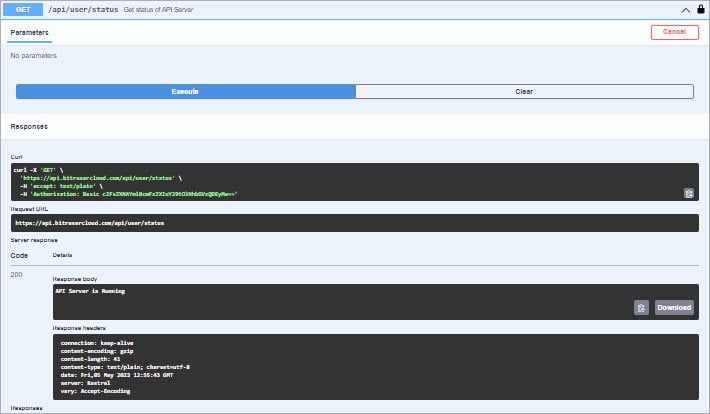
Image 19: BitRaser API Server Status
The data in BitRaser API is downloadable in JSON format, which can then be pulled into any third-party IT Asset management application using the provided script. It enables smooth data transfer.
Conclusion:
The
BitRaser Cloud-based API provides real-time asset tracking, monitoring, and automatic data transfer from erasure reports and certificates. Organizations can use the BitRaser Cloud API to seamlessly pull data erasure records into their asset management tool to enhance operational efficiency while reducing human errors and saving time. 








